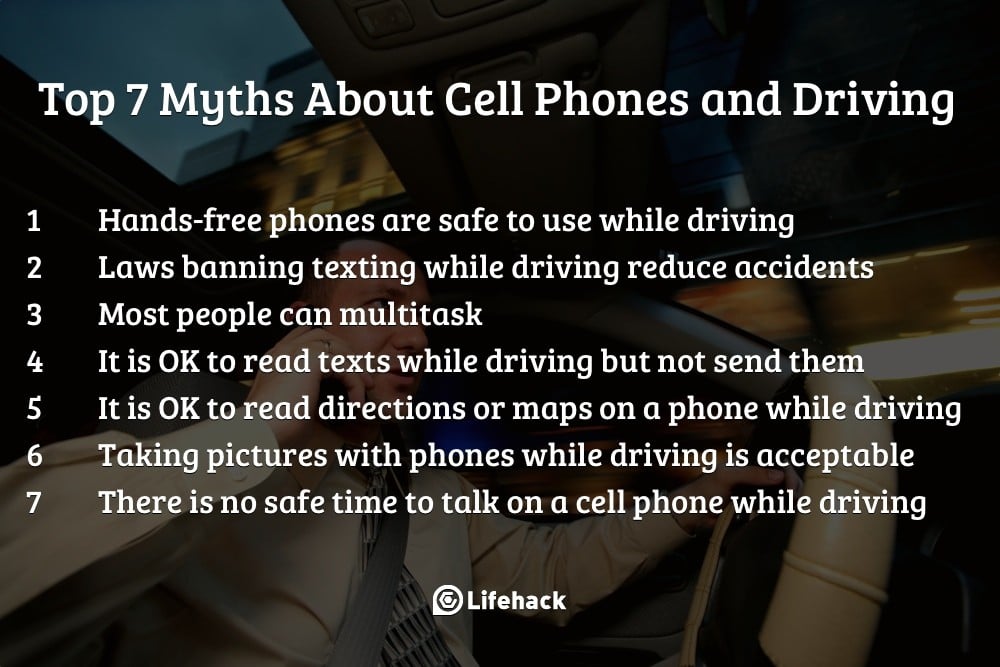Myth 1: Hands-free phones are safe to use while driving
Various studies have shown that driving with one hand is not the primary contributing factor to cell phone-related auto accidents. In the dark ages before cell phones were popular, there seemed to be little concern about radio stations or cassette tapes causing auto accidents. A study conducted by the National Safety Council concluded that carrying on a conversation was far more distracting than dialing or holding a cell phone. They hypothesized that chatting with other passengers in a car does not pose as much of a danger as the passengers can act as another set of eyes. Cell phones cannot.
Myth 2: Laws banning texting while driving reduce accidents
After numerous states implemented laws banning texting while driving, the number of auto accidents went up. Instead of texting with the phone in plain sight, drivers began to text while holding the phone lower to avoid a ticket. Certain accidents that were avoided by drivers seeing a potential collision out of their peripheral vision were no longer avoided. These laws are not only well-intentioned but necessary. Drivers should take the initiative to stop texting while driving.
Myth 3: Most people can multitask
Only around 2% of the population can actually multitask. Multitasking can be defined as doing two unrelated things that both require attention simultaneously. For example, writing a report while fluently carrying on a conversation would be considered multitasking. Writing a report in front of the television would not. The television would not require attention, but carrying on a fluent conversation would. Most people think they can multitask, but very few people actually have the ability to do so.
Myth 4: It is OK to read texts while driving but not send them
Reading and sending text messages while driving is dangerous. When reading texts, a driver is not only failing to pay attention to his or her surroundings, but he or she isn’t even looking at the road. Drivers are meant to periodically glance at gauges such as a car’s speedometer. Reading texts is dangerous due to a driver’s shifted attention to the text as well as the extended period of time it takes to glance from phone to road.
Myth 5: It is OK to read directions or maps on a phone while driving
Messing around with maps and directions on smartphones is just as bad as texting. If you’re lost, pull over to find your location and the right directions. Drivers tend to drive carelessly and erratically when lost if they panic. Instead of panicking and risking an accident, find a good spot to park and regroup.
Myth 6: Taking pictures with phones while driving is acceptable
This is simply confusing. People take pictures with phones while driving. Also motorists have also been observed brushing their teeth, eating bowls of cereal, and engaging in other bizarre behaviors during morning commutes. If you must take a picture, pull over.
Myth 7: There is no safe time to talk on a cell phone while driving
There is one safe time to text, talk, and do whatever else on your cell phone while technically driving. Your car must be in park. In the event you are stuck behind a major accident on the interstate for a number of hours, all types of cell phone use is safe as long as the car is in park. Note that you can still be cited for texting and driving, even if your car is not moving. Slowly moving cars during rush hour do not count. To be safe while using your phone, your car must be in park.
Cell phone usage and driving
Instead of risking being hurt or harming someone else in an accident, use your cell phone only one way while driving. Have your car in park. If injured after an auto accident, seek expert help. Instead of engaging in legal trouble and hospital visits, simply park your car before fumbling with your phone.
